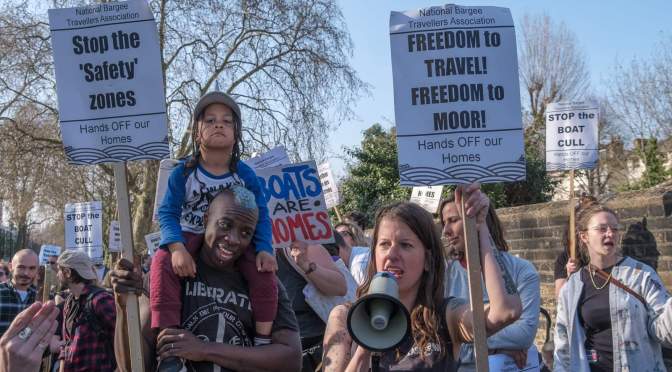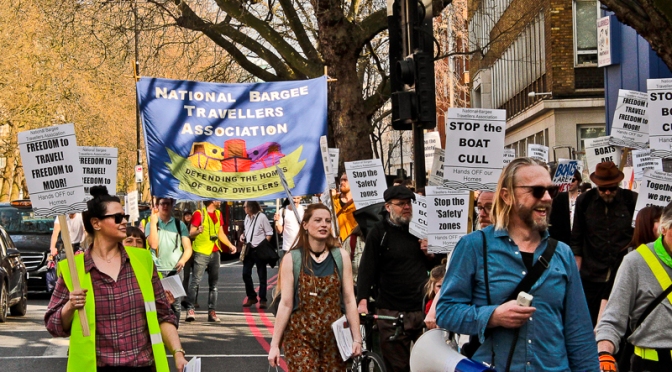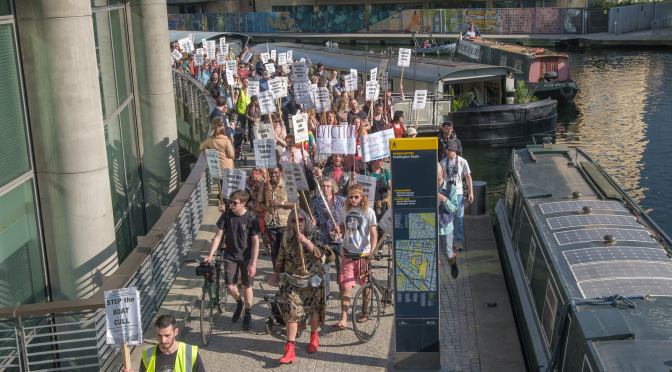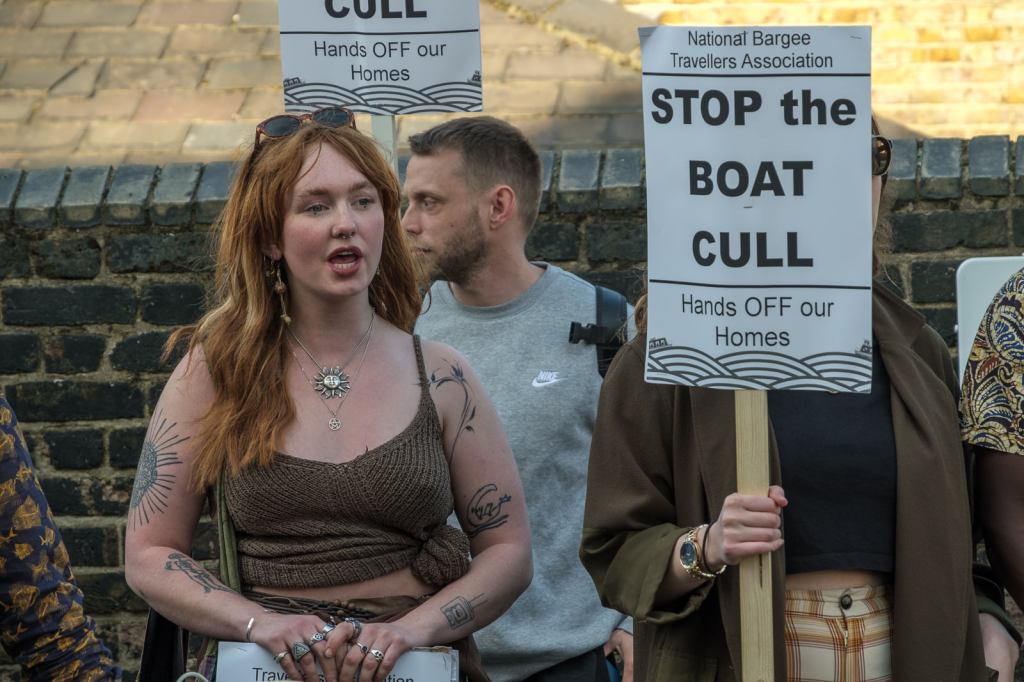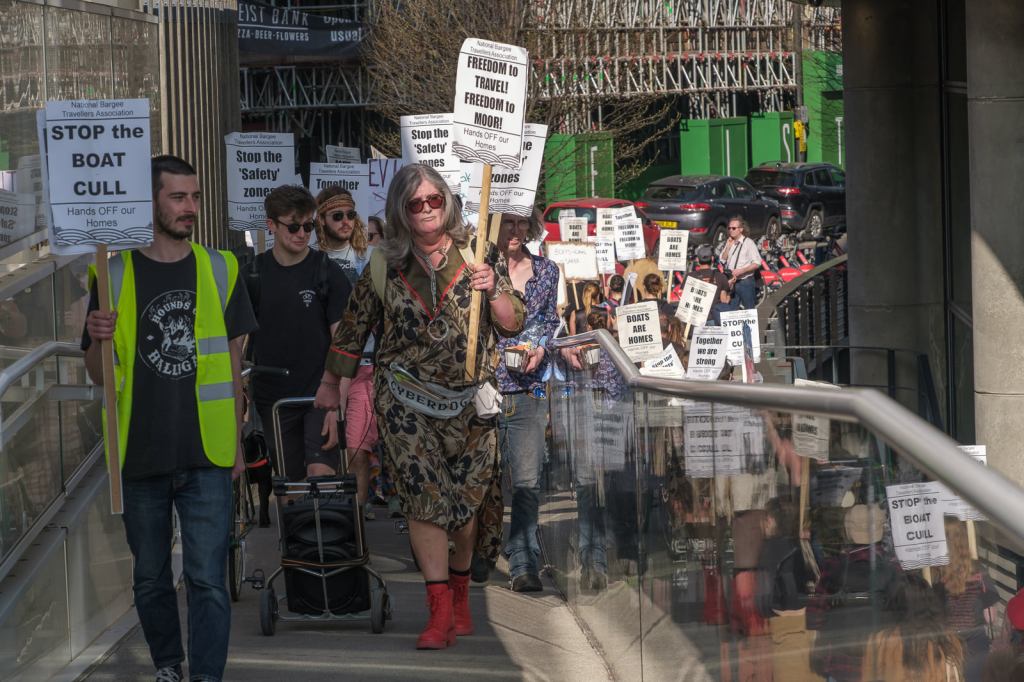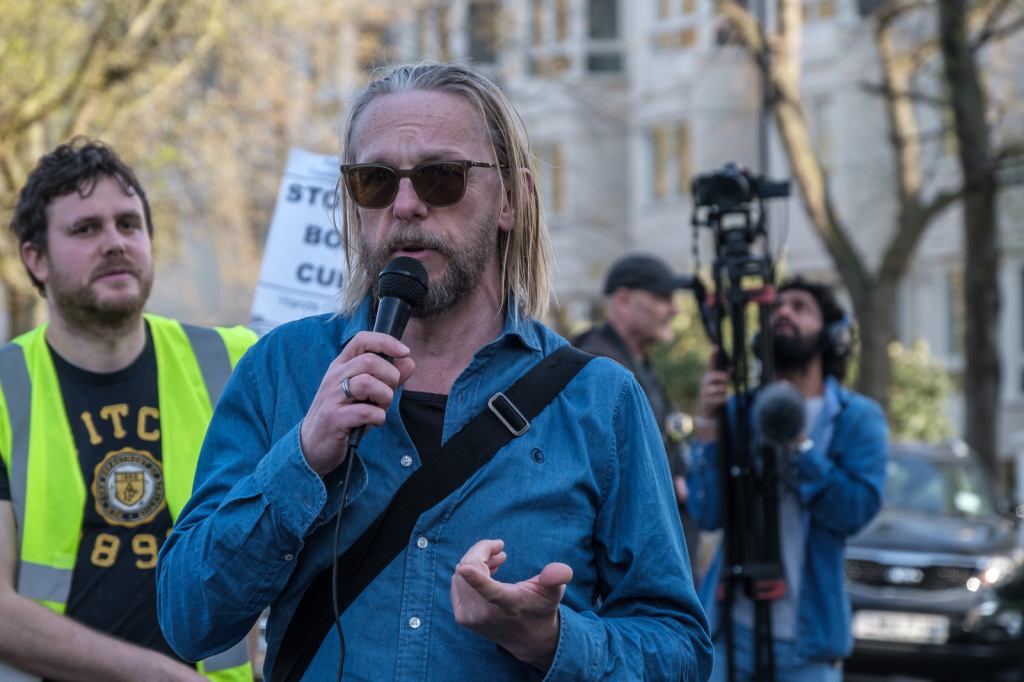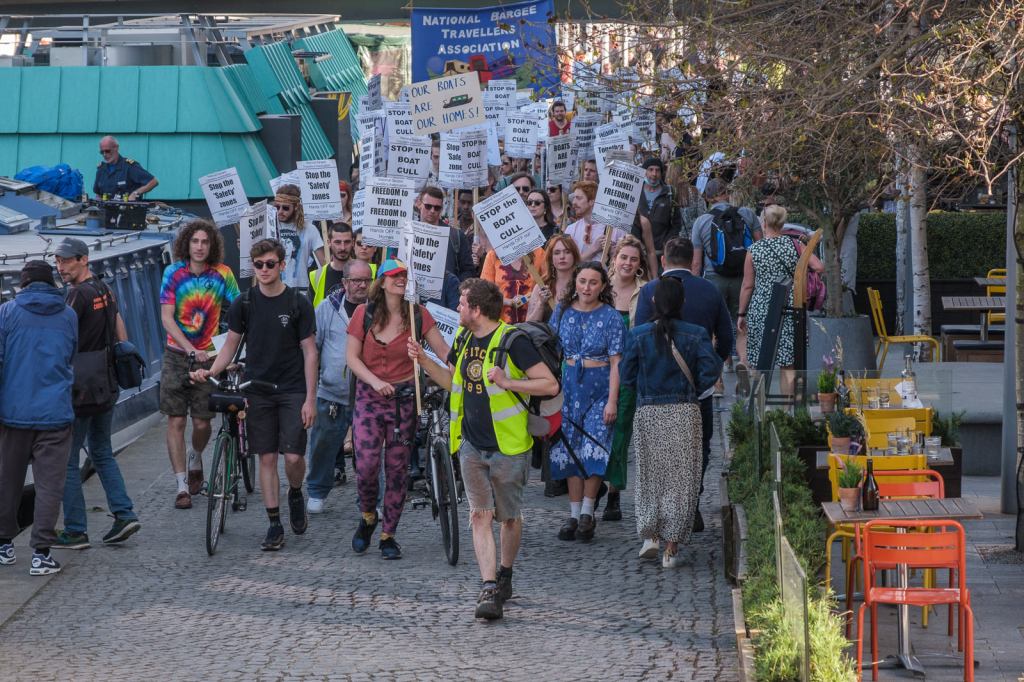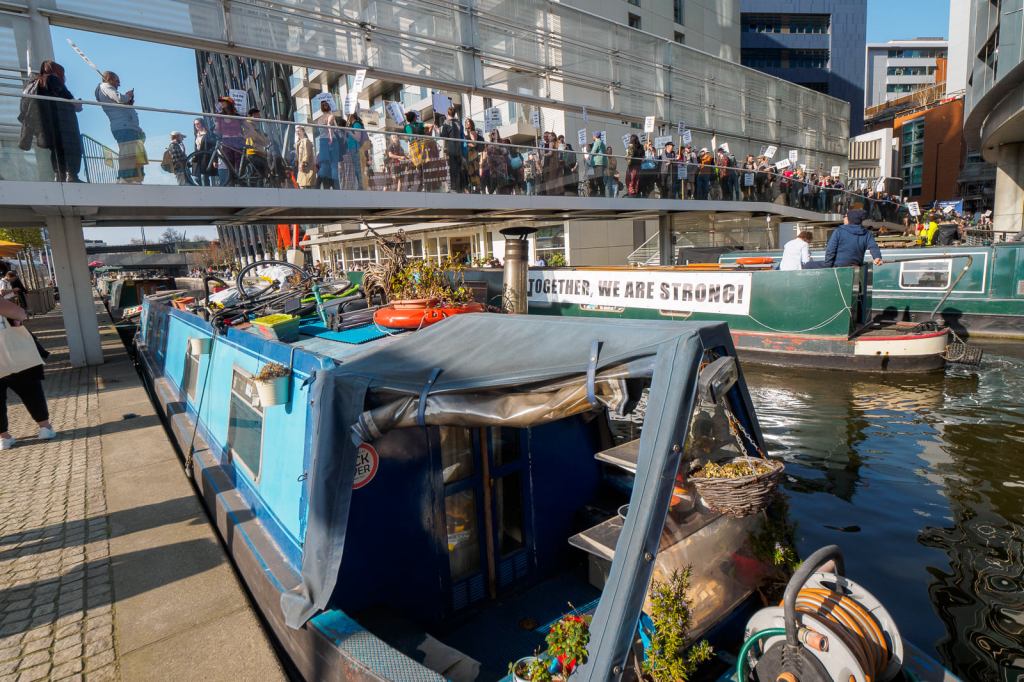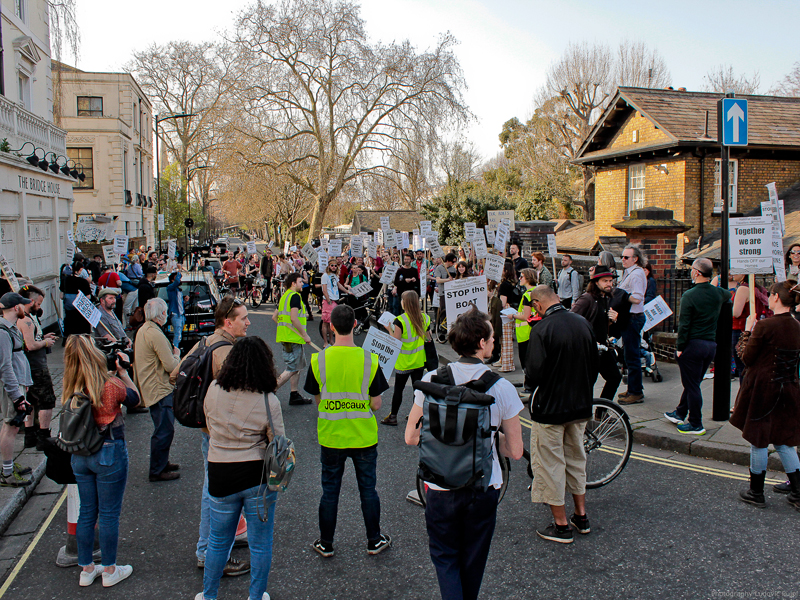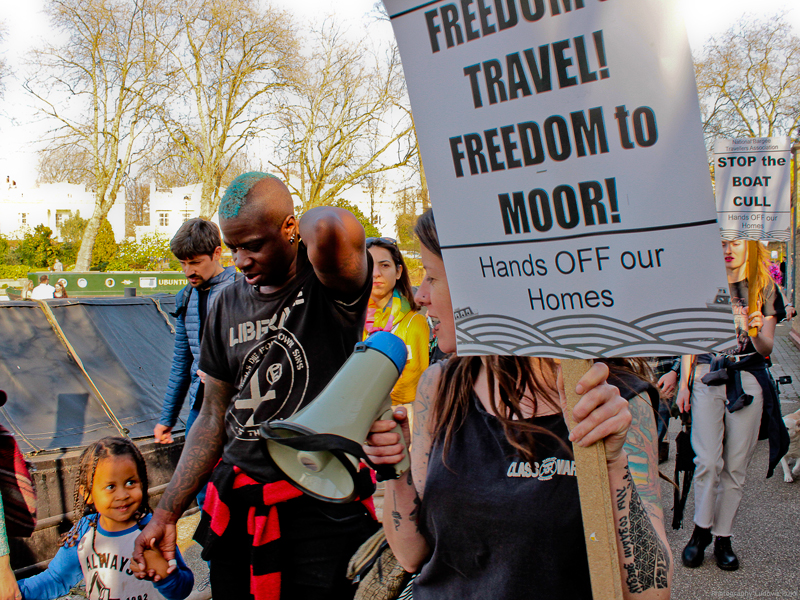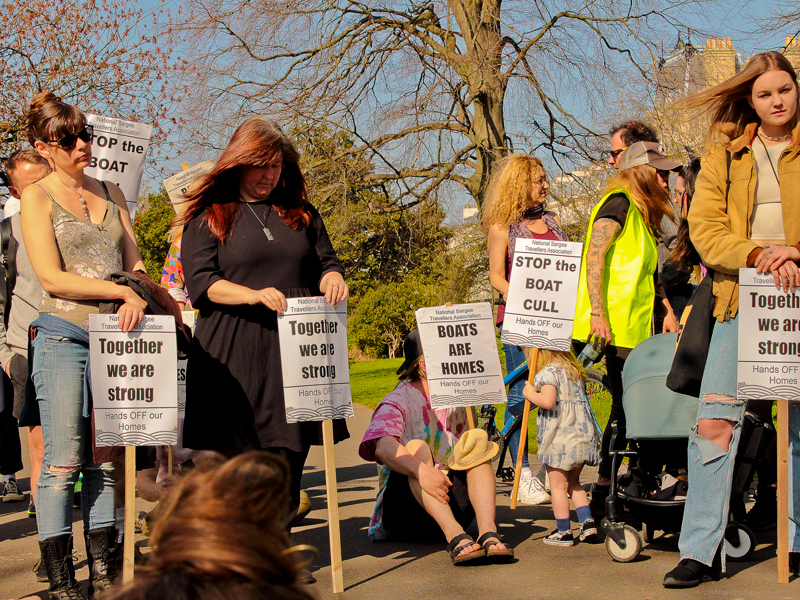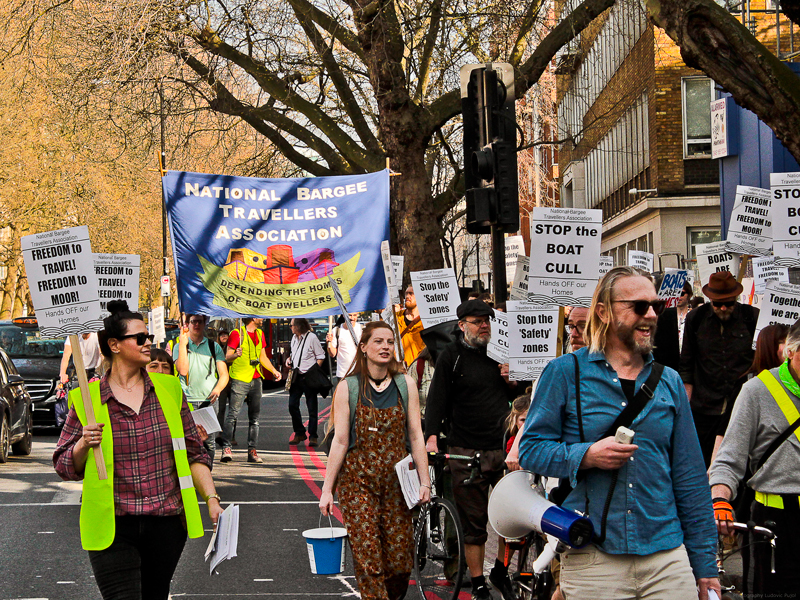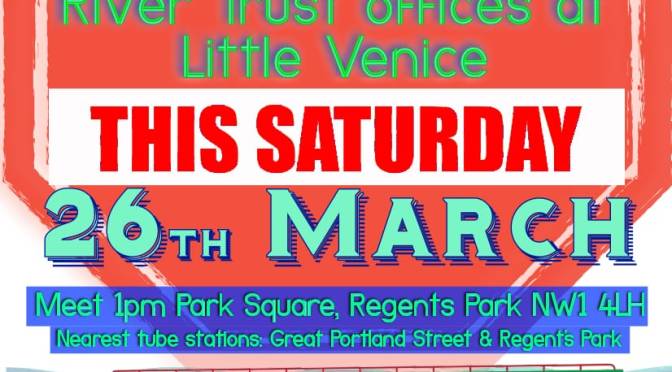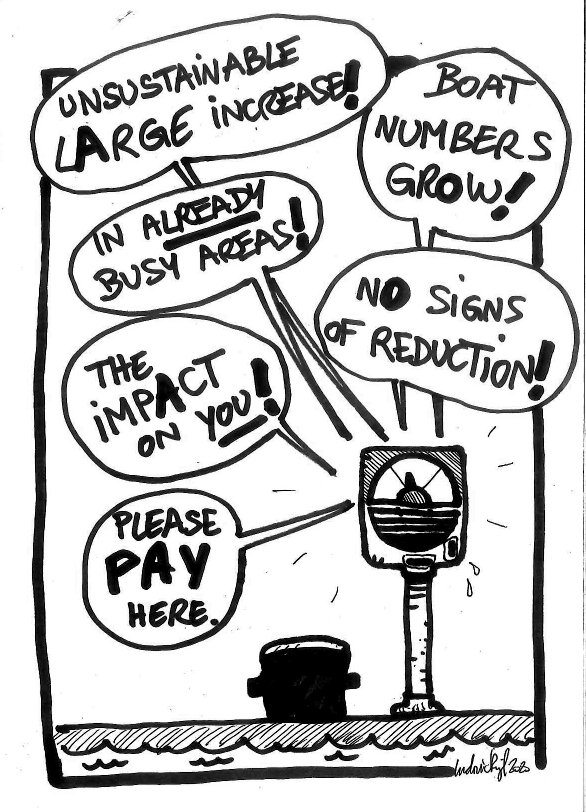The Canal & River Trust’s (CRT) failing ’Water Safety Zones’ scheme on the River Lee has been dealt another blow after a risk assessment confirmed that the expensive and unpopular zones are ‘not necessary’.
Once referred to by CRT as ‘Water Sports Zones’, these designated areas on both the Lower and Upper Lee – close to the Lea Rowing Club in Hackney and Broxbourne Rowing Club in Hertfordshire – are a part of CRT’s strategy to remove the number of places where boaters can moor, and to force the itinerant liveaboard community off the water.
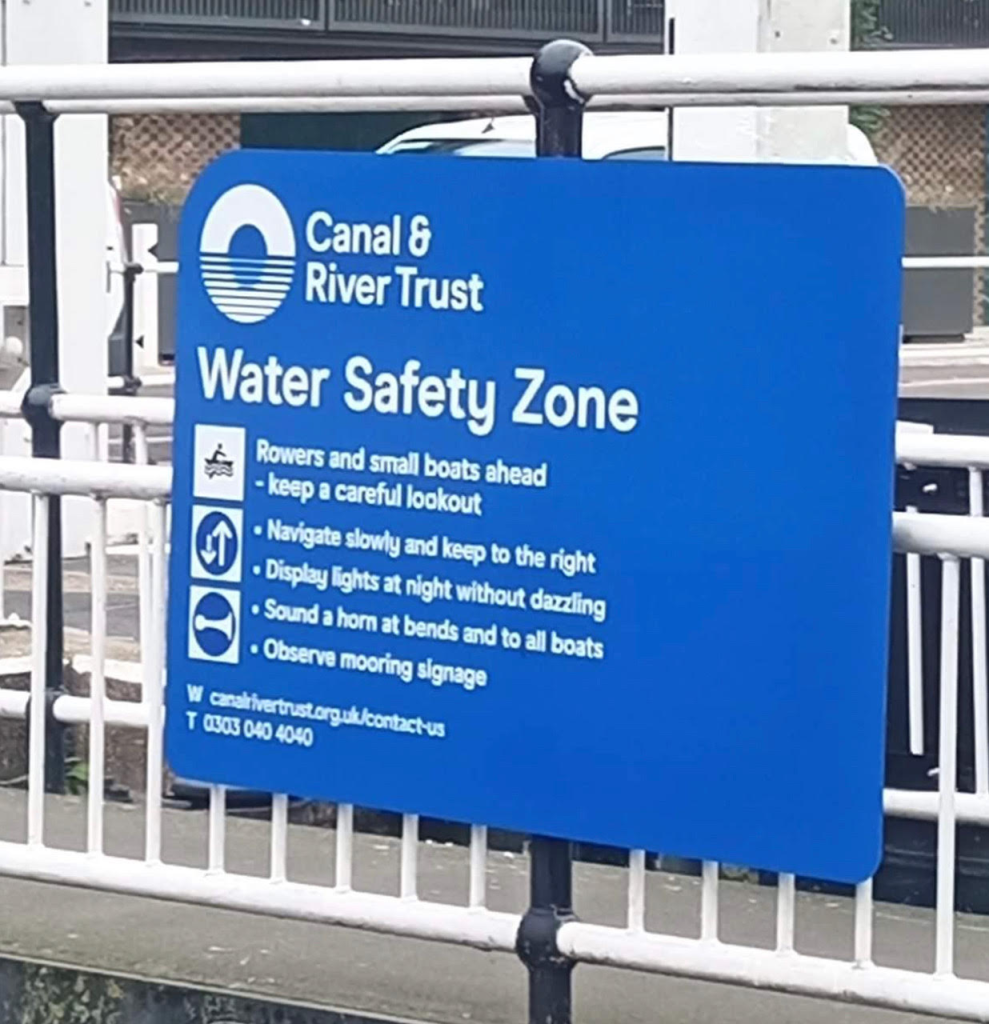
Initially CRT had plans to get rid of 550 mooring spaces along the River Lea, where boaters have the right to moor for up to 14 days at a time. Following a sustained campaign of resistance from the boating community (many of whom have continued to moor on the sites despite harassment and failed attempts at enforcement) CRT relented on the full threatened 550 mooring spaces. However, they continue to try and eliminate 295 mooring spaces.
CRT have been unable to provide a clear reason for these ‘No Mooring’ Zones, and despite constant requests have not released any assessment that explains why these sites should be ‘No Mooring’. The National Bargee Travellers Association (NBTA) finally ran out of patience and commissioned an independent risk assessment at three of these ‘No Mooring’ Zones themselves. This assessment, carried out by a qualified and experienced IOSH and IIRSM Risk Assessment professional at three of the ‘No Mooring’ Zones, concludes the following:
‘Boats moored in this area cannot be considered an additional risk as they comply with national standard practice(…) Mooring restrictions at these sites are not necessary’.
The resulting verdict goes on to suggest that it is more important for craft – including row boats – to manage their speed effectively to avoid any potential incidents.
The ‘No Mooring’ Zones policy is designed to make life difficult for many boaters, and could ultimately drive them off the water and out of their homes.
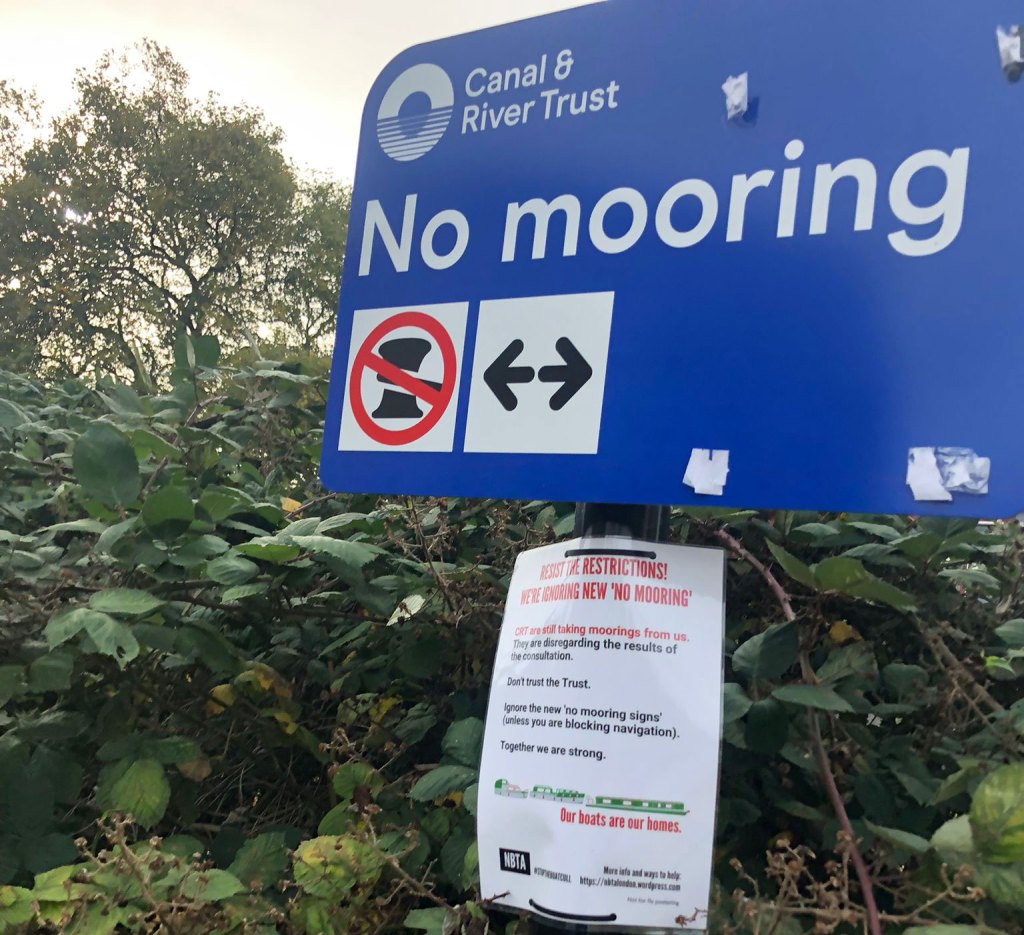
Daniel Prada is an itinerant liveaboard boater who has been moored on and off on the ‘No Mooring Zones’ this year, including on one of the sites the risk assessment covers. He said:
“It’s clear to me that this has never been about safety. The Lower Lee is one of the widest waterways in the whole of CRT’s South East waterway region and I’ve never seen any issues with the navigation at all because of moored boats. Honestly, this just feels like another way for the CRT to put pressure on boaters and make our life more difficult. This is my home – it’s where I’m raising my daughter. To have CRT try and force me out of it just makes me more resolved to defend it so that the waterways can remain a place for everyone.”
CRT has recently put out a series of announcements regarding their money issues, blaming everyone but themselves for the holes in their finances. However, a Freedom of Information request shows that as of 31 May 2023, the Trust has wasted anything up to £249,680.09* on the Water Safety Zones – much of it spent on outsourced enforcement contracts with companies like District Enforcement.
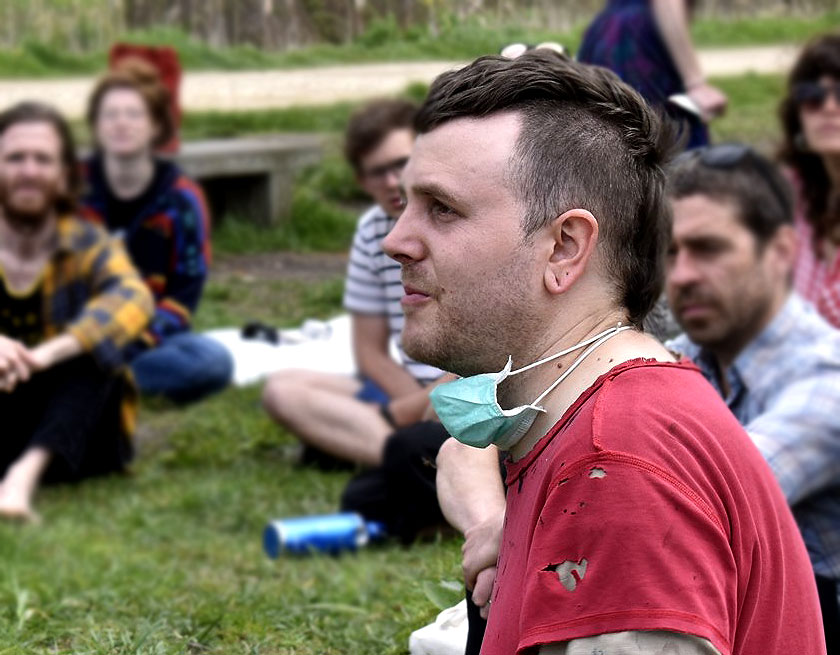
Marcus Trower, of the London branch of the National Bargee Travellers Association (NBTA), has also been continuing to defy the ‘No Mooring’ Zones. He said:
“The NBTA has continuously tried to engage with the CRT to address legitimate safety concerns, but this risk assessment confirms what we knew all along – that the so-called ‘water safety zones’ have never been about safety, and have always been about trying to erase our community from our homes, impoverishing the waterways as a result. Boaters have mounted an incredible resistance to this dishonest, wasteful and fundamentally doomed policy for years, ever since it was first announced. The news that CRT has been lying about their intentions all along, and wasting hundreds of thousands of pounds – which we provide through our licence fees – in the process will only galvanise our community further. CRT needs to stop mismanaging both their finances and the waterways in general, and get their house in order. We will continue to resist, protest and push back at any and all further attacks on the boater community with all means at our disposal.”
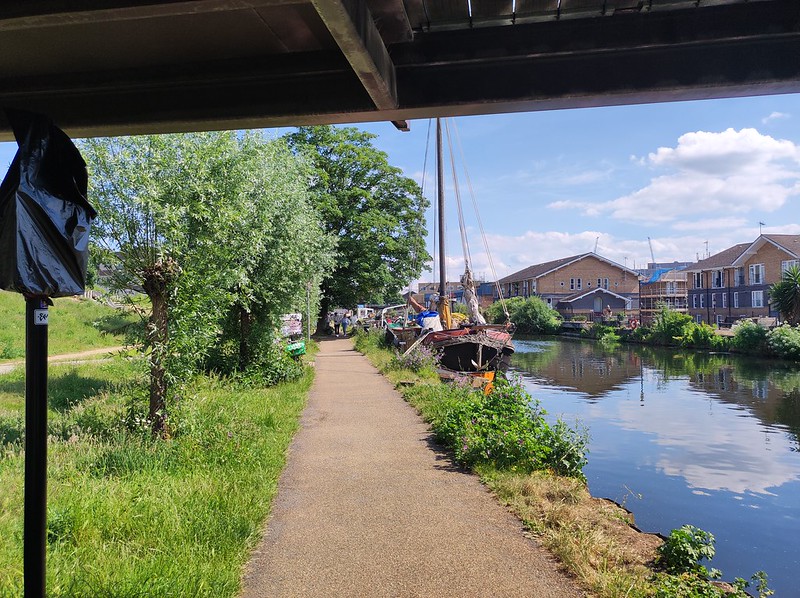
The campaign of resistance against the ‘Water Safety Zones’ continues in full swing. Many boats continue to ignore the ‘no mooring’ signs and resist CRT’s campaign of harassment, and in May of this year hundreds attended the NBTA Spring Fayre – a celebration of the boater community held at one of the key sites that the CRT is trying to erase boaters from in Hackney.
*CRT caveats this figure, saying it is the total spend in the ‘Water Safety’ Zones, and so may cover costs relating to other Trust activities. However, after the recent spate of new ‘No Mooring’ signs erected in both areas, this number will certainly have risen since May already.
NBTA London needs your support to carry on our work. Please get in touch here if you would like to volunteer with us. Alternatively your donations are vital to us supporting boaters with their legal case work, campaign banners and other printed material as well as events. You can help us with your donations online here

